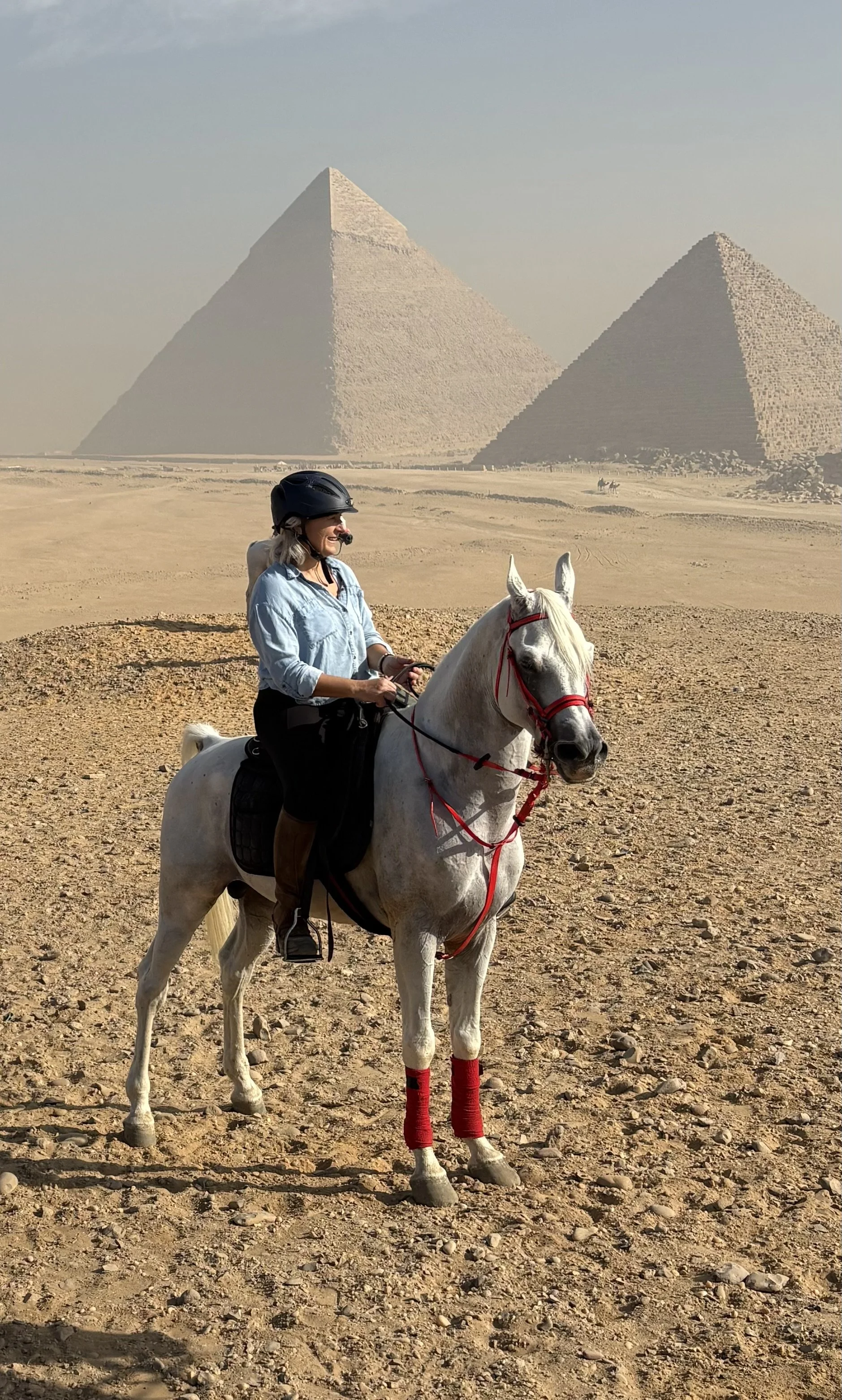Egypt Ride -- Day 1 -- Feeling So Alive in the Land of the Dead
Riding across the desert to a pharaoh’s tomb, floating down the Nile as crocodiles slip through the reeds, watching a snake charmer call his cobra from a basket – these were the images that placed Egypt on the top of my wish list when I was just eight. Instead, I was greeted by smog heavy skies, rows of mono-color apartment buildings pressing to the edge of a 16-lane highway, and the blare of horns. I won’t lie, by the time we reached Giza, I was more than a little worried I might not have my childish expectations met.
At the hotel, we joined the others from our riding group on the roof for dinner. Not far from the edge of town stood the giant pyramids, their outlines faint in the smokey night air. Even in the dim light, it was obvious they were massive.
Sipping coffee the next morning, I watched buses disgorge tourists who were immediately descended upon by camel drivers offering to tote them to the best viewing spots. Unlike the bus passengers and human camel baggage, we’d be approaching the pyramids on horseback. Still, given the press of people, was it reasonable to expect either a good ride or the opportunity for any real ‘connection’ with this place? Probably not, I decided.
But… of course I was wrong.
First, there were the horses. Yes, they were thinner than I would have liked. But like the faint outline of the pyramids I’d glimpsed the night before, there was no hiding the classic lines of these exquisite Arabians. When, within minutes of mounting, we were galloping up the dunes past the camels with their human baggage, the child in me rejoiced.
Here it was, that perfect moment when you know nothing but the beat of hooves, the wind in your face, and the blur of all that is other — all that is not part of the single fused being you and your horse have become. It is the most visceral aliveness I know.
After a few amazing gallops, we slowed our mounts and approached the largest of the pyramids. Dismounting, we walked to the base and touched the massive stones.
Later, we traded our horse guides for an Egyptologist, who taught us about the many dynasties and took us to Saqqara to see the oldest pyramid. As he peeled back the layers of this ‘black’ land’s history, I came to understand that, like me, Alexander the Great and Julius Caesar had gaped at these ancient structures that were more than 3000 years old when they saw them. Like me, Alexander and Julius might have approached the Sphinx on the back of a galloping horse, felt the warm stones of this monument to death and been awed.
There in lies Egypt’s transcendent allure – here in a land that has made preparation for death the purpose of life – you have the opportunity to feel both profoundly alive and completely connected to the full scope of human history, as infinitesimal as that history may actually be.

